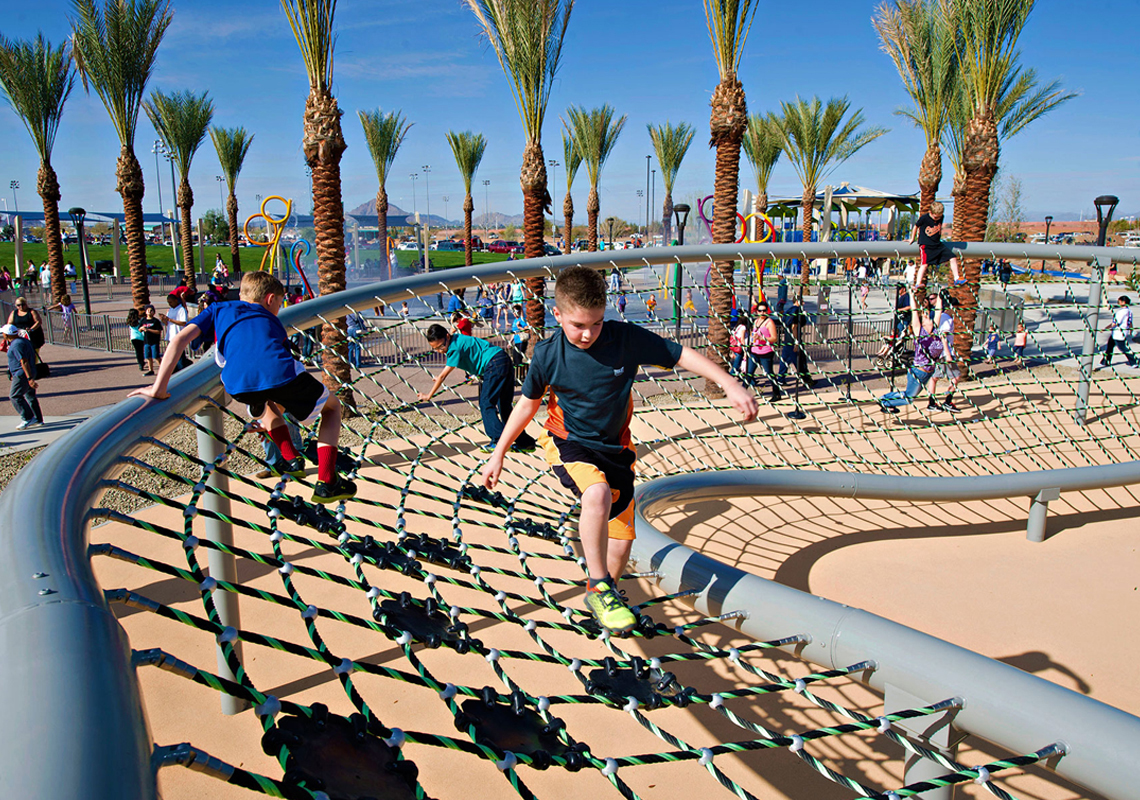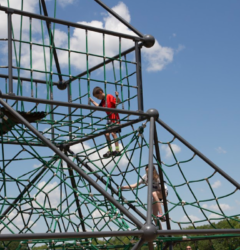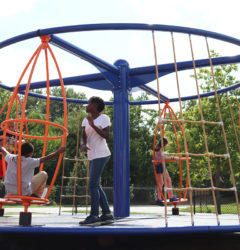23 Nov

Designing a playground that is accessible and inclusive can feel overwhelming with so many potential situations to consider. Intellectual disabilities don’t often have physical limitations, whereas developmental disabilities typically do. Physical obstructions for somebody in a wheelchair may be a different challenge than for somebody who has a visual impairment. Some children with Autism Spectrum Disorder (ASD) may feel safe in an open-space, while other children who comes to play may feel safe in a closed-space. Balancing a blend of physical and developmental needs while also including intellectual stimulation and places of solitude is a perfect way to create a safe space for all children to come together in play.
Playgrounds for children of all abilities foster a sense of inclusion, and safety. When a playground is designed to be accessible it becomes more instinctive to use. They are often sized and spaced for an easier approach to the games. Unobstructed entrances, roll-up access for wheelchairs, and multiple access points can provide a sense of comfort or relief for parents and caregivers, who are able to participate or assist in a safer form of play. Activities like ropes, nets and Biggo swings can provide a fun place to play while also being more openly visible for parents to keep an eye on their child. It can also offer additional comfort to a child who may like to keep an eye on Mom or Dad!
An accessible and inclusive playground is a great form of affordable (free!) therapeutic play. Learning a new fine motor skill or building confidence by being able to move through a challenging obstacle can become a rewarding part of their day. Something as simple as lying on a Biggo swing can be a valuable resource for therapeutic play. Is there anything more liberating than floating through the air on a swing? A child may also enjoy the sensation of the vibrations that come with shaking or bouncing on a rope course. Maybe they will even create a unique way to communicate – like a morse code – three shakes for yes, or two shakes for no!
For a child who does not like to be confined to the one-path type of playground structure, an open concept game may feel more stable and trustworthy. They are often simpler, with an intuitive use. There are no entrances or exit points, which can remove potential frustrations for a child who may struggle to understand the subtle rules of play such as waiting their turn. An outdated or inadequate playground can feel segregating or limited to a person with a disability. When children of all abilities can enter the games via the same routes and paths, you create an opportunity for equitable play.
Older children and teenagers living with developmental or intellectual disabilities can benefit from play well into adulthood. However, their physical size can be a hinderance at a playground built solely for an able-bodied, young child. Tube structures, traditional swings, and narrow slides are limiting. An adult with an intellectual disability may still find pure joy in play, especially in a playground not restrictive in size.
Almost 14% of Canadians live with some form of a disability. When we commit to designing accessible and inclusive playgrounds, we are committing to providing an equitable and flexible communal space for children, teens, and adults of all abilities. This togetherness supports a rewarding and engaging experiences with people from different backgrounds and abilities.









Follow Dynamo Playgrounds